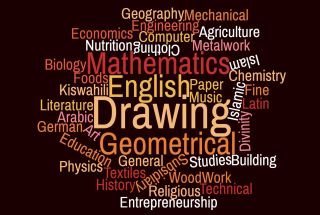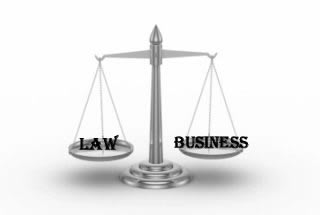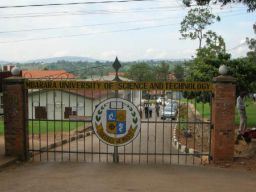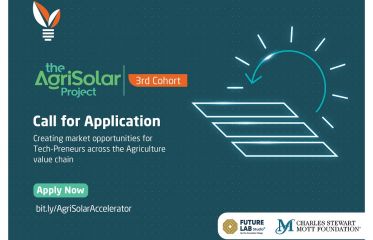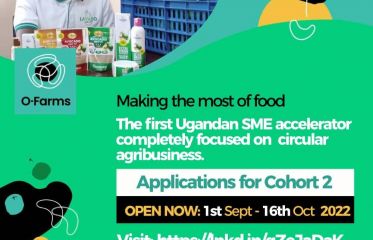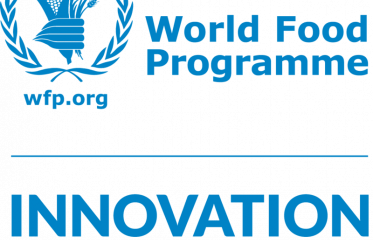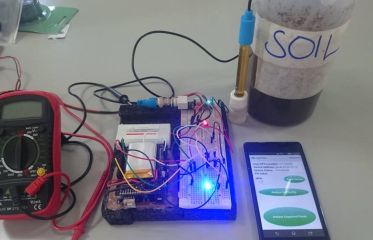Breaking News
- Flexible Remote Work Opportunity for University Students: Earn $100–$250 Per Month ...Read More
- Ministry of Education and Sports Azerbaijan Government Scholarships For 2025-2026 Academic Year ...Read More
- Government Sponsorship Undergraduate Admission Lists 2025-26 for Makerere University ...Read More
- Ministry of Education And Sports: Egyptian Government Scholarships 2025-2026 Academic Year ...Read More
- Ground Breaker Full Scholarship for girls to study Software Engineering 2025 July Intake ...Read More
- Tony Elumelu Foundation Entrepreneurship Programme (TEEP) 2025 for young African Entrepreneurs ...Read More
- DESIGNING FUTURES 2050 International Design Competition 2025 (€15,000 prize) ...Read More
- Ground Breaker Full time Scholarship for girls to study Software Engineering 2025 Intake ...Read More
- Ministry of Education And Sports Algerian Vocational Training Scholarships for 2024-2025 AY ...Read More
- Ministry of Education and Sports Advert for the Algerian Government Scholarships for 2024-2025 ...Read More
Aquacultural Manager
Direct and coordinate, through subordinate supervisory personnel, activities of workers engaged in fish hatchery production for corporations, cooperatives, or other owners. Sample of reported job titles: Aquaculture Cooperative Marketing Director, Aquaculture Director, Aquaculture Program Director, Facility Operations Manager, Farm Operations Technical Director, Fish Hatchery Manager, Hatchery Manager, Hatchery Supervisor, Recirculating Aquaculture Systems Specialist, Shellfish Manager
Add to FavouritesWork Tasks
1. Grow fish and shellfish as cash crops or for release into freshwater or saltwater.
2. Monitor environments to ensure the maintenance of optimum conditions for aquatic life.
3. Supervise and train aquaculture and fish hatchery support workers.
4. Determine, administer, and execute policies relating to operations administration and standards, and facility maintenance.
5. Collect and record growth, production, and environmental data.
6. Direct and monitor trapping and spawning of fish, egg incubation, and fry rearing, applying knowledge of management and fish culturing techniques.
7. Direct and monitor the transfer of mature fish to lakes, ponds, streams, or commercial tanks.
8. Account for and disburse funds.
9. Determine how to allocate resources and to respond to unanticipated problems, such as insect infestation, drought, and fire.
10. Conduct and supervise stock examinations to identify diseases or parasites.
Key Knowledge Areas
Biology — Knowledge of plant and animal organisms, their tissues, cells, functions, interdependencies, and interactions with each other and the environment.
Administration and Management — Knowledge of business and management principles involved in strategic planning, resource allocation, human resources modeling, leadership technique, production methods, and coordination of people and resources.
English Language — Knowledge of the structure and content of the English language including the meaning and spelling of words, rules of composition, and grammar.
Production and Processing — Knowledge of raw materials, production processes, quality control, costs, and other techniques for maximizing the effective manufacture and distribution of goods.
Mathematics — Knowledge of arithmetic, algebra, geometry, calculus, statistics, and their applications.
Food Production — Knowledge of techniques and equipment for planting, growing, and harvesting food products (both plant and animal) for consumption, including storage/handling techniques.
Customer and Personal Service — Knowledge of principles and processes for providing customer and personal services. This includes customer needs assessment, meeting quality standards for services, and evaluation of customer satisfaction.
Mechanical — Knowledge of machines and tools, including their designs, uses, repair, and maintenance.
Personnel and Human Resources — Knowledge of principles and procedures for personnel recruitment, selection, training, compensation and benefits, labor relations and negotiation, and personnel information systems.
Computers and Electronics — Knowledge of circuit boards, processors, chips, electronic equipment, and computer hardware and software, including applications and programming.
Building and Construction — Knowledge of materials, methods, and the tools involved in the construction or repair of houses, buildings, or other structures such as highways and roads.
Key Skills
Monitoring — Monitoring/Assessing performance of yourself, other individuals, or organizations to make improvements or take corrective action.
Speaking — Talking to others to convey information effectively.
Critical Thinking — Using logic and reasoning to identify the strengths and weaknesses of alternative solutions, conclusions or approaches to problems.
Time Management — Managing one's own time and the time of others.
Judgment and Decision Making — Considering the relative costs and benefits of potential actions to choose the most appropriate one.
Reading Comprehension — Understanding written sentences and paragraphs in work related documents.
Active Listening — Giving full attention to what other people are saying, taking time to understand the points being made, asking questions as appropriate, and not interrupting at inappropriate times.
Complex Problem Solving — Identifying complex problems and reviewing related information to develop and evaluate options and implement solutions.
Management of Personnel Resources — Motivating, developing, and directing people as they work, identifying the best people for the job.
Social Perceptiveness — Being aware of others' reactions and understanding why they react as they do.
Writing — Communicating effectively in writing as appropriate for the needs of the audience.
Active Learning — Understanding the implications of new information for both current and future problem-solving and decision-making.
Key Abilities
Oral Comprehension — The ability to listen to and understand information and ideas presented through spoken words and sentences.
Oral Expression — The ability to communicate information and ideas in speaking so others will understand.
Written Comprehension — The ability to read and understand information and ideas presented in writing.
Written Expression — The ability to communicate information and ideas in writing so others will understand.
Problem Sensitivity — The ability to tell when something is wrong or is likely to go wrong. It does not involve solving the problem, only recognizing there is a problem.
Deductive Reasoning — The ability to apply general rules to specific problems to produce answers that make sense.
Inductive Reasoning — The ability to combine pieces of information to form general rules or conclusions (includes finding a relationship among seemingly unrelated events).
Information Ordering — The ability to arrange things or actions in a certain order or pattern according to a specific rule or set of rules (e.g., patterns of numbers, letters, words, pictures, mathematical operations).
Near Vision — The ability to see details at close range (within a few feet of the observer).
Speech Clarity — The ability to speak clearly so others can understand you.
Speech Recognition — The ability to identify and understand the speech of another person.
Category Flexibility — The ability to generate or use different sets of rules for combining or grouping things in different ways.

















